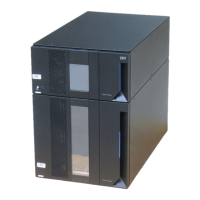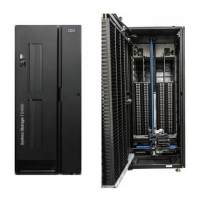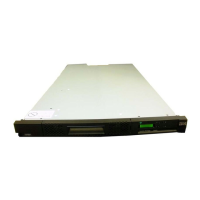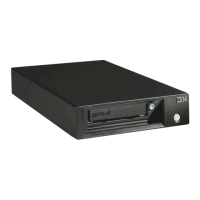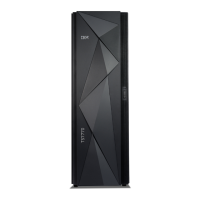Table 24. Average block locate time from load point for 3592 tape cartridge in 3592 tape drives (continued)
Type of 3592
Tape Cartridge
Average Block Locate Time from Load Point
1
Comments
2
TS1140 tape
drive
TS1130 tape drive TS1120 tape drive
3592 J1A Tape
Drive
JX cartridge type
37 seconds 45 seconds Not supported
Extended WORM
(EFMT2 and
EEFMT2 700 GB
[651.93 GiB];
EFMT3 and
EEFMT3
1 000 GB [931.32
GiB]; EFMT4 and
EEFMT4
1 600 GB [1490.12
GiB])
JY cartridge type
40 seconds Not supported Not supported Not supported
Advanced
WORM (EFMT4
and EEFMT4 4 TB
[3.64 TiB])
JR cartridge type
Not supported 11 seconds 12 seconds
Economy WORM
- short length
(EFMT1 60 GB
[55.88 GiB];
EFMT2 and
EEFMT2 100 GB
[93.13 GiB];
EFMT3 and
EEFMT3 128 GB
[119.21 GiB])
Notes:
1. For an encrypted format, an additional 5 seconds may be required to obtain a encryption key to read the first
block accessed on the cartridge.
2. Encrypted format is referred to as EEFMT2 (for E05), EEFMT3 (for E06), and EEFMT4 (for E07).
By using the built-in data-compression capability of the tape drives, you can
achieve greater data rates than the native data transfer rate. However, the actual
throughput is a function of many components, such as the host system processor,
disk data rate, block size, data compression ratio, interconnect (for example, SCSI
or Fibre Channel), and system or application software.
For maximum performance with SCSI drives, multiple SCSI buses may be required
and the TS3500 Tape Library devices must be the only target devices that are active
on each SCSI bus. For more information, see the section about the SCSI interface in
the IBM System Storage TS3500 Tape Library with ALMS Operator Guide.
Library performance
This section explains how performance values, such as cartridge inventory times,
mount performance, and cartridge move time, are obtained for the TS3500 Tape
Library.
Performance values for the TS3500 Tape Library, whether measured on test systems
or modeled through simulations, are based on a fixed set of workload assumptions
to ensure accurate comparisons; however, the results are not evaluated in all
Chapter 1. Introduction 83
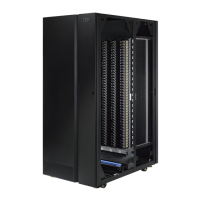
